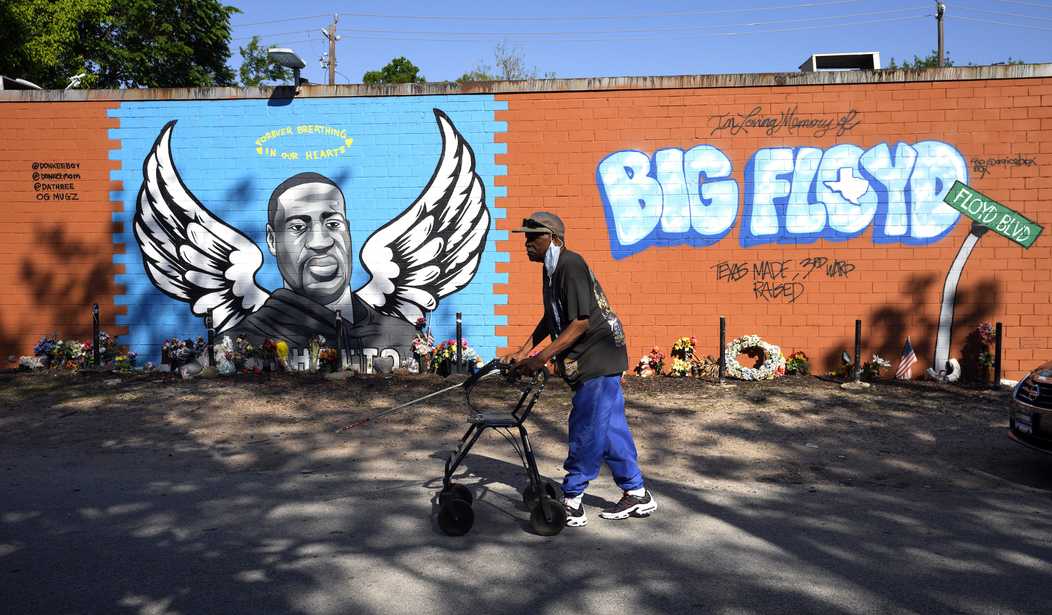In the years since the death of George Floyd, which the media and the left exploited to spark race riots in the summer of 2020, many still believe that white police officer Derek Chauvin, who had been deploying a commonly used technique to subdue suspects, killed Floyd. The facts were never important enough to overcome the preferred narrative of the Democrats and the media: a racist white cop killed a black man.
And for good measure, it was Trump’s fault, too.
As we previously reported at PJ Media, George Floyd did not die from asphyxia or strangulation. The medical examiner knew that. Prosecutors knew it, too. The truth was covered up.
So how exactly did George Floyd die?
Two physicians were consulted for an article in The American Spectator. One of the physicians, Dr. John Dale Dunn, recreated Chauvin’s hold on Floyd with stand-ins and proved it was not harmful or lethal, which means that other factors likely caused Floyd’s death — not Chauvin.
“Derek Chauvin didn’t kill Mr. Floyd,” Dunn told Jack Cashill of The American Spectator. “His bad heart did.” Medical Examiner Andrew Baker testified at Chauvin’s that Floyd had “very severe underlying heart disease.”
The other physician, called Quincy, found a short but significant line in Floyd’s autopsy that sheds light on this: “Taken together, the gross and microscopic (H&E-stains) features of the lesion are most suggestive of an extra-adrenal paraganglioma.”
This rare tumor was found in Floyd’s pelvis. Baker recognized the tumor, argues Quincy, but he failed — or refused — to understand its potency and significance.
These tumors, says Quincy, produce the most potent hormones in our bodies, namely adrenaline and noradrenaline. The class of hormones they belong to is called catecholamines. “When the tumor goes off,” he tells me, “that is what’s called a catecholamine crisis. It might as well be a bomb.”
Among the symptoms of such a crisis are high blood pressure, confusion, excessive sweating, muscle weakness, anxiety, panic attacks, shaking, delusions, and hyperactivity, all of which Floyd exhibited on that fateful evening in May. More critically, when massive amounts of catecholamines are released into the blood, various organs of the body fail. Quincy compares the effect to the flooding of a lawnmower’s carburetor.
“When a lawnmower engine gets too much gas and floods the carburetor, the engine loses power and chokes and sputters,” Quincy explained. “In a similar way, too much adrenaline causes the heart to lose its ability to pump blood.” When an individual’s heart begins to fail and cannot effectively pump blood, the blood backs up from the heart and leaks into the lungs. The increased fluid covering the alveolae of the lungs interferes with the oxygenation of the blood."
Quincy continued, “It appears to me, watching the police bodycam videos, and now knowing he has an occult paraganglioma, that Mr. Floyd exhibits many of the signs and symptoms of a full blown catecholamine crisis.”
As Cashill notes, "The crisis was likely triggered when Officer Thomas Lane taps the window of Floyd’s car with his flashlight at 8:09 that evening. Floyd, who had been nodding contentedly in the front seat of a borrowed Mercedes SUV, is startled and flips out."
Quincy and Dunn both believe that after Floyd was startled, his paraganglioma was triggered, resulting in a substantial release of adrenaline into his system. This surplus of catecholamine overwhelmed his heart, inducing acute heart failure. Subsequently, the severe acute heart failure led to pulmonary edema, culminating in respiratory failure, hypoxia, and eventual death.
"One can forgive the cops for not correctly diagnosing Floyd’s condition. Baker and the other state witnesses deserve no such grace,” explains Cashill. "Quincy was stunned to learn that once Baker observed Floyd’s paraganglioma, he failed to test for catecholamines. Quincy had been taught that if a catecholamine producing tumor is found during the autopsy of someone who dies suddenly and unexpectedly, a catecholamine crisis is the prime suspect. Unless the lab results come back normal, it remains the prime suspect."
George Floyd didn’t deserve to die, but the lives of Chauvin and the other officers involved in the incident didn’t need to be destroyed just to support a favorite narrative of the radical left.










Join the conversation as a VIP Member